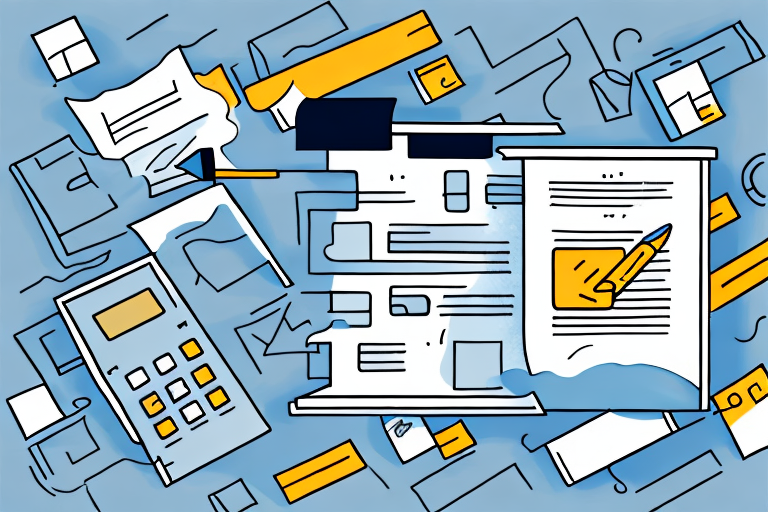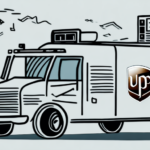How to Request a UPS Shipping Charge Correction Express: A Comprehensive Guide
If you've ever received a UPS invoice containing unexpected charges, you understand the frustration of reconciling those discrepancies. Fortunately, UPS offers a service called Shipping Charge Correction Express that allows you to quickly and easily address any billing errors. In this article, we'll provide an in-depth analysis of this service, including reasons to request it, how to identify billing errors, and the steps to successfully submit a correction request.
Why Request a UPS Shipping Charge Correction Express?
There are several reasons why you might need to request a Shipping Charge Correction Express. Billing discrepancies can occur during the shipping process due to various factors:
- Incorrect weight or dimension calculations
- Incorrect shipping addresses or service levels
- Manual overrides entered by UPS leading to erroneous charges
- Incorrect exemptions or missing charges
- Misleading or unauthorized charges assessed to your company
These errors can result in significant financial losses. According to a American Express report, businesses can lose up to 5% of their shipping budget due to inaccurate billing. By requesting a correction, you ensure that you are not overpaying for shipping services, thereby saving your company money and maintaining accurate financial records.
It's crucial to request a Shipping Charge Correction Express promptly, as UPS has specific timeframes for submitting correction requests. Failing to adhere to these deadlines can result in the charges becoming permanent, affecting your financial statements adversely.
Understanding UPS Shipping Charges
To effectively identify and correct shipping charge errors, it's essential to understand how UPS calculates shipping costs. UPS shipping charges are based on several factors:
- Package Dimensions and Weight: Larger and heavier packages incur higher fees.
- Distance: Shipping rates increase with the distance between the origin and destination.
- Service Level: Options like ground, air, and international shipping vary in cost and delivery time.
- Additional Fees: Fuel surcharges, residential delivery fees, and other optional services can add to the total cost.
Understanding these components can help you anticipate and verify your shipping costs. For instance, UPS provides detailed rate charts that outline the pricing structure for different services and regions.
Common Reasons for UPS Shipping Charge Errors
Despite careful planning, several common issues can lead to UPS shipping charge errors:
- Inaccurate weight or dimension calculations by the shipper
- Incorrect delivery information submitted by the shipper
- Missing or unauthorized charges that should have been applied
- Manual overrides by UPS resulting in incorrect billing
- Incorrect exemptions or discounts not applied
- Misleading or unauthorized third-party charges
These errors not only inflate your shipping costs but can also disrupt your financial planning and customer satisfaction. Ensuring accurate shipment details and regularly reviewing invoices can mitigate these risks.
According to the Forbes Technology Council, businesses can reduce shipping errors by implementing verification processes and using automated systems for billing and invoicing.
How to Identify a UPS Shipping Charge Error
Identifying a shipping charge error involves meticulous comparison between your shipping records and the UPS invoice:
- Compare Invoices to Shipment Records: Ensure that the charges on the invoice match the original shipment or quote summary.
- Verify Package Weight and Dimensions: Check that the weight and dimensions listed on the invoice align with your actual package details.
- Review Applied Discounts and Promotions: Ensure that any applicable discounts or promotions have been correctly applied to your invoice.
Utilizing accounting software or UPS's online tools can streamline this verification process. Additionally, maintaining detailed shipment records can facilitate quicker identification of discrepancies.
Research from NCBI highlights the importance of accurate data entry in logistics to minimize billing errors and improve overall operational efficiency.
Steps to Request a UPS Shipping Charge Correction Express
Requesting a Shipping Charge Correction Express is a straightforward process. Follow these steps to ensure your request is handled efficiently:
- Contact UPS Customer Service: Reach out to UPS through their official customer service channels to initiate a correction request.
- Provide Necessary Information: You will need to supply your company name, the tracking number of the shipment, and detailed information about the billing discrepancy.
- Await Confirmation: UPS typically provides an updated invoice within 24 hours that reflects the corrected shipping charges.
Note that this service is available only for shipments billed to a UPS account. For third-party billing options, contact the billing party directly. If discrepancies are noticed after invoice payment, you can still request a correction, though this may require additional documentation and take longer to process.
For more detailed instructions, refer to the official UPS guide.
Preparing for Your Request: What to Know Before You Call
Preparation is key to a successful correction request. Before contacting UPS customer service, ensure you have the following:
- Original Invoice: Have the original invoice and any relevant shipment or quote summary documents handy.
- Detailed Discrepancy Information: Clearly understand and document the nature of the billing error.
- Tracking Number: Keep your tracking number accessible to provide accurate shipment details.
Having this information readily available can expedite the correction process and reduce the likelihood of additional follow-ups.
Speaking with a UPS Customer Service Representative
When communicating with a UPS representative, maintain a calm and professional demeanor. Clearly explain the issue and provide all necessary details. Here are some tips to ensure effective communication:
- Request the Representative's ID: This can be useful for future reference or if you need to escalate the issue.
- Ask for a Confirmation Number: Ensure you receive a confirmation number for your correction request.
- Be Specific: Provide as much detail as possible about the discrepancy to avoid misunderstandings.
- Request Escalation if Needed: If the issue is complex, don't hesitate to ask for a supervisor or a specialized representative.
Effective communication can significantly improve the chances of a swift and accurate correction.
Providing the Necessary Information for Your Request
When submitting your correction request, ensure you provide comprehensive and accurate information:
- Company Name and Account Details: Clearly state your company's information associated with the UPS account.
- Tracking Number: Provide the tracking number for the shipment in question.
- Details of the Discrepancy: Describe the nature of the billing error in detail.
- Supporting Documents: Include screenshots or photos that highlight the discrepancy.
- Additional Context: Any other relevant information that can assist UPS in understanding and resolving the issue.
Providing detailed and accurate information can expedite the resolution process and reduce the likelihood of further discrepancies.
Tracking Your Correction Request Status
After submitting your correction request, it's important to monitor its status to ensure timely resolution:
- Use UPS's Online Account Portal: Log in to your UPS account to track the status of your correction request.
- Follow Up with Customer Service: If the status is unclear or there are delays, contact the UPS representative who assisted you for updates.
Depending on the complexity and volume of requests, the time required to process corrections can vary. Regularly checking the status can help you stay informed and address any additional requirements promptly.
Studies indicate that timely follow-ups can reduce the resolution time by up to 30% [Logistics Management].
Confirming the Accuracy of Your Revised Invoice
Upon receiving the revised invoice, conduct a thorough review to ensure all corrections have been accurately applied:
- Line-by-Line Comparison: Compare each charge on the revised invoice with your original shipment records.
- Verify Corrected Amounts: Ensure that the corrected charges reflect the accurate weight, dimensions, and service levels.
- Check Applied Discounts: Confirm that all applicable discounts and promotions have been correctly applied.
If discrepancies persist, contact UPS immediately to seek further clarification or request additional corrections.
Tips for Avoiding Future UPS Shipping Charge Errors
Preventing future shipping charge errors involves implementing best practices and leveraging available tools:
- Accurate Data Entry: Ensure that all shipment details, including weight and dimensions, are entered accurately.
- Verify Shipping Addresses: Double-check shipping addresses to avoid delivery errors that can lead to additional charges.
- Select Appropriate Service Levels: Choose the correct UPS service level that aligns with your shipping needs.
- Regularly Review Invoices: Implement a routine for reviewing invoices upon receipt to catch errors early.
- Use UPS Online Tools: Utilize UPS's online resources and tools for tracking and billing to enhance accuracy.
- Employee Training: Train staff involved in shipping to ensure they understand UPS billing processes and error prevention strategies.
Conclusion
Submitting a correction request for inaccuracies in a UPS invoice is a straightforward process that can save your business significant costs and maintain accurate financial records. By following the outlined steps—preparing necessary documentation, effectively communicating with UPS representatives, and thoroughly reviewing revised invoices—you can efficiently resolve billing discrepancies. Implementing preventive measures will further safeguard your business from future shipping charge errors, allowing you to focus on what matters most: running your business smoothly and efficiently.






















